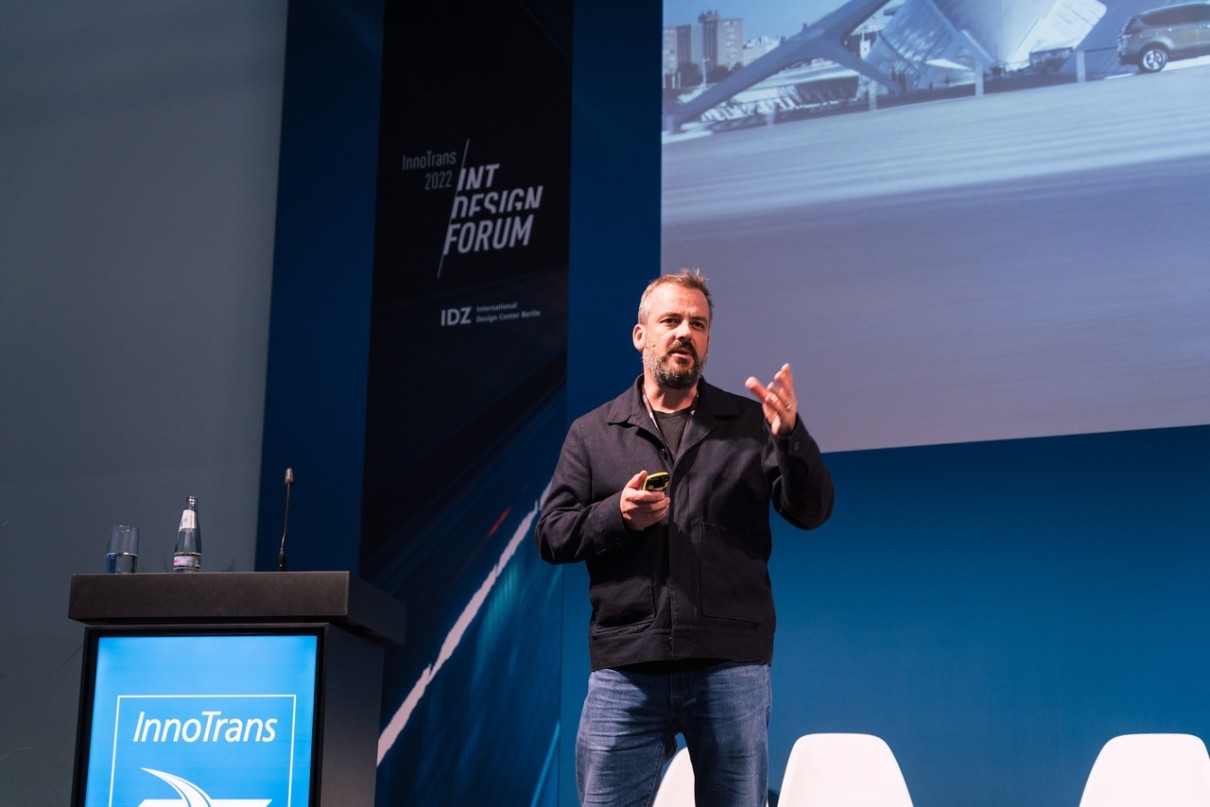Page content
Five forecasts – an optimistic look at the future
At the International Design Forum of InnoTrans 2022, Jeremy White, Transport Director at Seymourpowell, presented important changes that will impact how we humans will work and travel tomorrow. We have summarised the most important points from his lecture on ’Visions of an intelligent and sustainable mobility of the future’.
1. Soon we can be everywhere virtually
Virtual worlds are becoming more and more realistic. Inspecting a house or car, simulating operations or tourism can all be experienced in the virtual realm. People can receive training that way, historical buildings can be refurbished without setting foot in them. White says “it is collaborative virtual spaces such as these that will further reduce the need to travel and help explain, market and sell products.“
2. The future is flexible
The context of a trip is decisive for fulfilling people’s needs. That is why White’s company has observed people’s travel behaviour and developed flexible ways of exploiting interiors and spaces for a wide range of needs. Among them is the Flex seating concept which depending on the group setting can satisfy private or communal needs. Intelligent algorithms help passengers make the best choices, assigning seats according to their needs, thus increasing satisfaction.
3. Visions for sharing transport in a post-pandemic world
During the pandemic transport sharing declined. People dislike sharing their space with strangers. Seymourpowell’s answer is the Quarter Car, a self-driving vehicle electric vehicle whose flexible cabins and partitions are specially designed for sharing space. “In future, we will have to share more“, says White. His vision even goes so far as to change the narrative of the car insofar as they purify the air when on the move instead of polluting it.
4. The return of the nomads
Reports estimate that by 2025, 25 per cent of the US population will be working remotely, and with “nomad visas“ even away from their home country. Seymourpowell has designed Nomad, a fully independent level 5 mobile home for working in comfort while the vehicle transports its passengers from one city to the next. Additional service vehicles also aim to make nomadic life more convenient and include water harvesting machines. “That could change the way communities form and our cities grow“, says White.
5. Slow is the new fast
Can being slow be better than being fast? Can travelling be an end in itself? These were questions that White posed at the end of his lecture and appealed to the audience to think about whether the rail industry wanted to successfully compete with aviation over long distances. Rail trips were 70 to 80 per cent less costly than flights. What the industry desperately needed was to improve communicating that message in a comprehensible and appealing way, he added. “For consumers concerned about sustainability rail is the only way to travel“, said Jeremy White.
You can view Jeremy White’s motivational lecture in full length on InnoTransPlus (starts at 3:00:50): https://plus.innotrans.de/eventdate/International-Design-Forum-Vom-Passagiererlebnis-bis-zum-vernetzten-Fahrzeug-Co-Innovation-fur-erfolgreiche-Mobilitatslosungen-IDZ--ed_12

Photo: Sebastian Schiefner © IDZ

